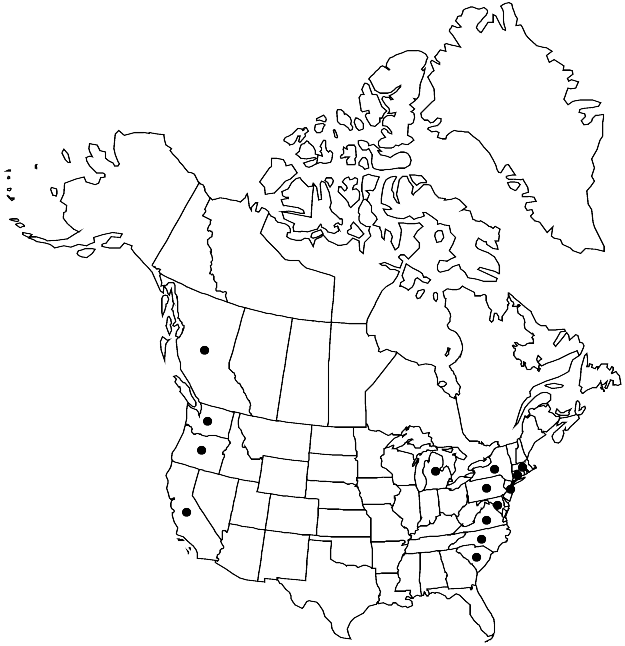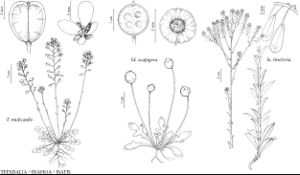Teesdalia nudicaulis
in W. Aiton and W. T. Aiton, Hortus Kew. 4: 83. 1812.
Stems 0.5–1.5 (–2) dm. Basal leaves: petiole 0.5–2.5 (–3.5) cm; blade oblanceolate to obovate in outline, 0.3–1.5 (–2) cm × 2–4 (–7) mm, margins usually lyrate-pinnatifid, rarely dentate or entire; lateral lobes obtuse. Cauline leaves 0–4; blade linear to oblong. Fruiting pedicels 3–7 mm. Flowers zygomorphic; sepals 0.5–0.8 (–1) × 0.4–0.6 (–0.8) mm; petals oblong to obovate, abaxial pair 1.5–2.5 × 0.6–1 mm, adaxial pair 0.5–1 × 0.3–0.4 mm; stamens 6, tetradynamous; filaments 0.8–1 mm, (basal appendage white, ca. 1/2 its length); anthers 0.1–0.2 mm. Fruits 3–4.5 × 3–4.5 mm; style ca. 0.1 mm. Seeds 1–1.2 × 0.9–1 mm. 2n = 36.
Phenology: Flowering Apr–Jun.
Habitat: Sandy areas along trails, near beaches, pine clearings, waste grounds, fields, roadsides, gravelly slopes
Elevation: 0-300 m
Distribution

Introduced; B.C., Calif., Conn., Md., Mass., Mich., N.J., N.Y., N.C., Oreg., Pa., S.C., Va., Wash., Europe, Asia (Middle East), also in South America (Chile), nw Africa, Australia
Discussion
Selected References
None.
Lower Taxa
"elongated" is not a number."thick" is not a number."dm" is not declared as a valid unit of measurement for this property."dm" is not declared as a valid unit of measurement for this property.
